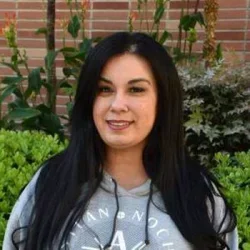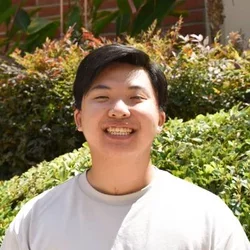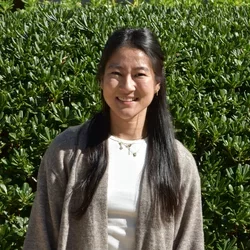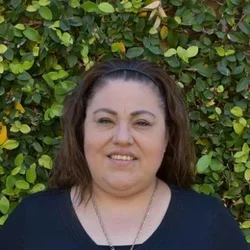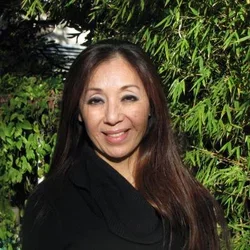Biological Chemistry Imaging Facility (BCIF)
General Information
Biological Chemistry Imaging Facility (BCIF) provides resources for data acquisition and analysis for radioactive, fluorescent, and photographic samples as well as digital imaging and document production. BCIF started operations in December 1994 as a small departmental facility. Over the years it grew into a core imaging facility serving the majority of departments and subdivisions of the UCLA David Geffen School of Medicine.
BCIF provides round-the-clock access to a cluster of fluorescent scanning equipment such as Typhoons 9410 and 9400 Variable Mode Imagers, Licor Odyssey near infra red imager, as well as Gel Documentation systems, color printers, and high-resolution flat-bed scanners. In addition BCIF provides scientific data storage space on its secure storage arrays to all participating labs, as well as access to a number of software packages for data analysis and digital data processing.
All equipment in the facility is available 24 hours a day, 7 days a week. The facility operates on a walk-in basis and provides technical support and instructions during weekdays, primarily for new users. Each lab is provided with its own account and space on a file server.
The Biological Chemistry Imaging Facility (BCIF) is under the David Geffen School of Medicine (DGSOM) umbrella and converted to AD / MEDNET only facility as of Monday, February 27, 2017.
A MEDNET email address is mandatory to get computer access. If you do not have a MEDNET email address, please complete one of the MEDNET email access forms and submit it to the appropriate office as referenced below.
School of Medicine Departments
Please submit either the employee (PDF) or non-employee (PDF) form to your Department HR or IT Office.
NOTE: A MEDNET email is typically generated within 3 business days
Please bring the following to 310 BSRB for access:
- UCLA ID
- BCIF Access Request Form PDF (one form per user)
- For server access, contact DGIT helpdesk (ITCsupport@mednet.ucla.edu) to set-up an appointment. Access is typically granted within 2 business days.
- Questions? Please contact Sugey Chavez (SugeyChavez@mednet.ucla.edu or x56545)
BCIF Locations
BCIF has one location: 344C BSRB for labs located at the Bioscience Research Building
Fee Structure
The cost is as follows:
- B&W Printing/Scanning – $0.07/print
- Color Printing/Scanning – $0.20/print
Equipment
Typhoon™ 9410 and 9400 Variable Mode Imagers from GE Healthcare are the main equipment pieces at both BCIF locations. Typhoon imagers are versatile systems, which handle agarose and polyacrylamide gels, membranes, mounted or unmounted storage phosphor screens up to 35×43cm, microplates, microarrays, and in situ slides.
- Storage phosphor
- Direct blue-excited fluorescence (457 nm, 488 nm)
- Direct green-excited fluorescence (532 nm)
- Direct red-excited fluorescence (633 nm)
- Chemiluminescence
Important Typhoon features:
- Unique Typhoon property: Highly sensitive confocal optics enables direct and highly quantitative imaging of fluorescent Western blots without intermediate exposure to films or screens
- Powerful excitation sources and confocal optics allow for the sensitive detection of very low-abundance targets
- Red-, green-, and two blue-excitation wavelengths and a wide choice of emission filters enable imaging of a variety of fluorophores across visible spectrum
- Automated four-color fluorescence scanning allows multiplexing of multiple targets in the same sample (i.e. Cy2, Cy3, and Cy5)
- Storage phosphor autoradiography delivers high-resolution imaging and accurate quantitation of 3H,14C,125I, 32P, 33P, 35S, and other sources of ionizing radiation
- Typhoon 9410 imager can image microarrays and in situ slides at 10 micron resolution
- The Typhoon exhibits outstanding linearity (4-5 orders of magnitude), quantitative accuracy, and extremely low limits of detection
Technical Specifications
Scan area 35 × 43 cm Sensitivity (limit of detection) Storage Phosphor: 14C (1 h exposure, 200 and 100 µm only): <2 dpm/mm2;32P: 5-10-fold lower than 14C488 nm excited fluorescence: 100 amol FAM end-labeled DNA primer in 12% polyacrylamide gel sandwich, 0.4 mm thick
532 nm excited fluorescence: 200 amol HEX, TMR, ROX, and 400 amol FAM end-labeled DNA primer in 12% polyacrylamide gel sandwich, 0.4 mm thick
633 nm excited fluorescence: 200 amol Cy5 end-labeled DNA primer in 0.4 mm thick, 12% polyacrylamide gel with TBE buffer. Pixel size 1000, 500, 200, 100, 50, 25 (9400 model), and 10 µm (9410 model), selectable Spatial resolution Autoradiography:2 line pairs/mm for lines drawn with14C ink.
Blue-excited fluorescence: 10 line pairs/mm
Green-excited fluorescence: 10 line pairs/mm
Red-excited fluorescence: 10 line pairs/mm Uniformity ± 5% over entire scan area. Pixel accuracy ± 0.15% Data format 16-bit (65,536 levels) TIFF Linear dynamic range and linearity Five orders of magnitude (100,000:1) with less than 7.5% relative standard deviation for entire dynamic range. Red light source Type: 10 mW Helium-Neon laser Estimated average lifetime: ~ 10,000 h Wavelength: 632.8 nm Green light source Type: 20 mW solid-state doubled frequency SYAG laser Estimated average lifetime: ~10.000 h Wavelength: 532 nm Blue light source Type: 30 mW all blue lines Argon ion laser Estimated average lifetime: ~5,000 h Wavelength: 488 nm (20 mW) and 457 nm (4 mW) External interface 10 Base-T Ethernet using TCP/IP protocol Software Scan control software for Windows™ operating system. Power requirements 115/230 V (switchable), 50-60 Hz, < 500 W Dimensions
(W × D × H) Instrument: 118 × 78 × 48 cm
Blue laser module: 30 × 78 × 48 cm
Contacts
